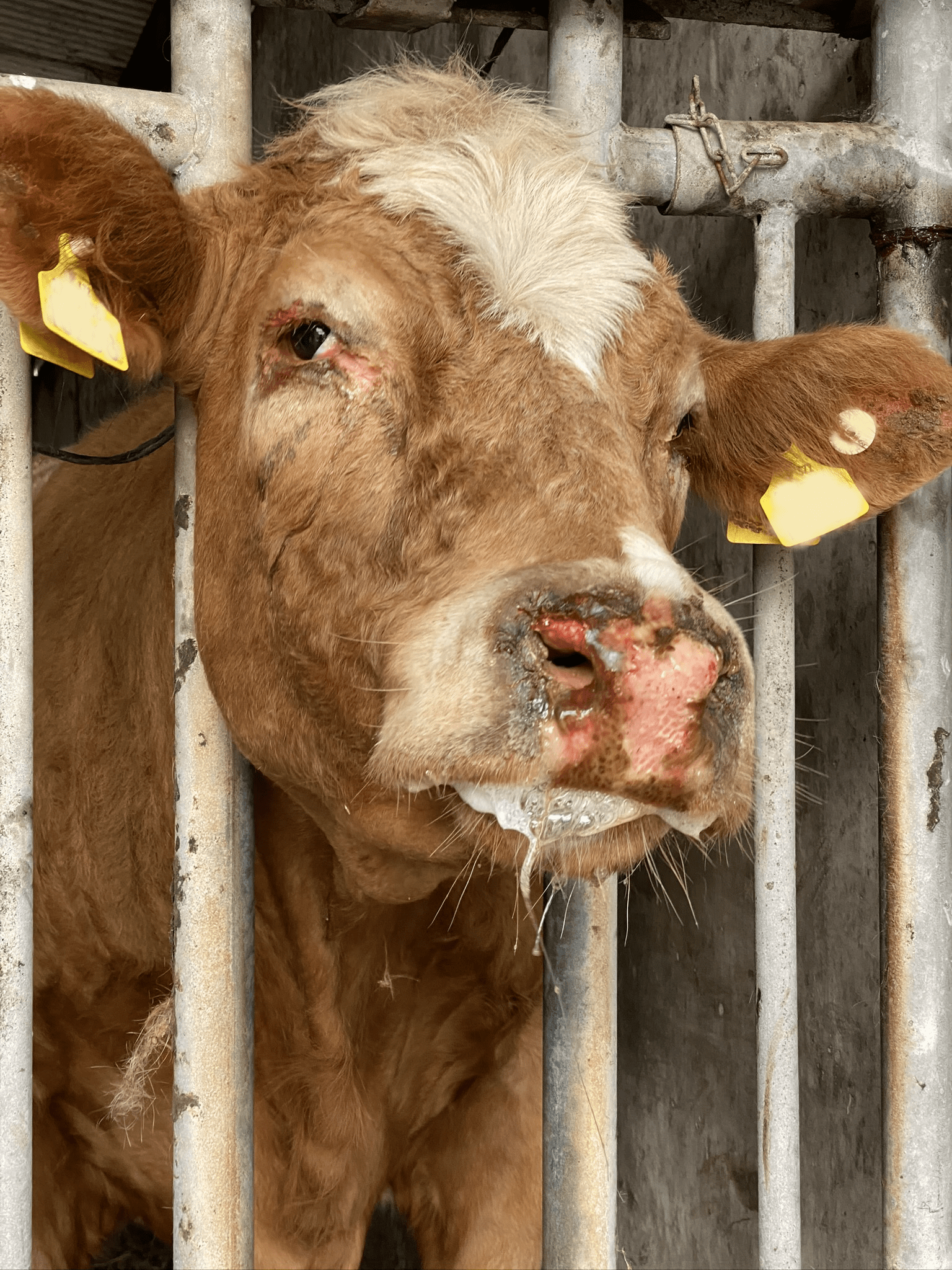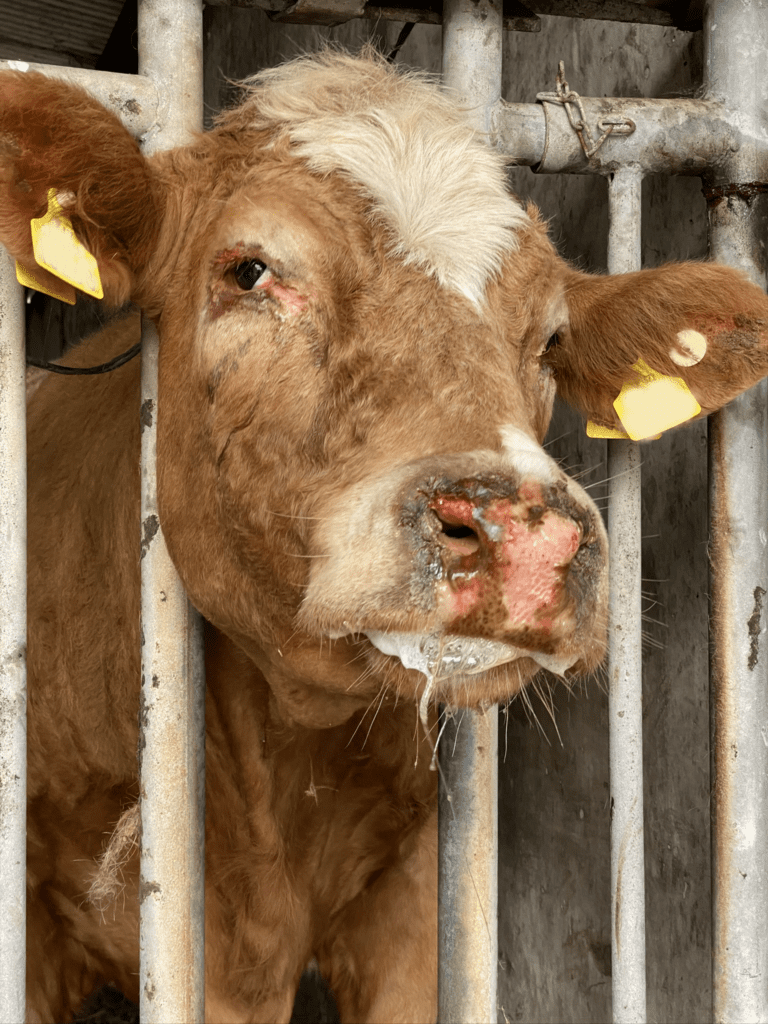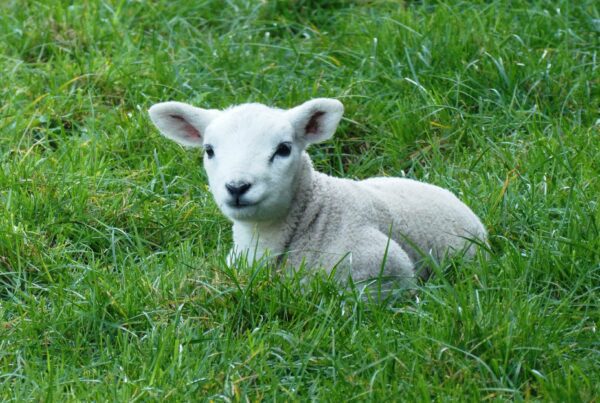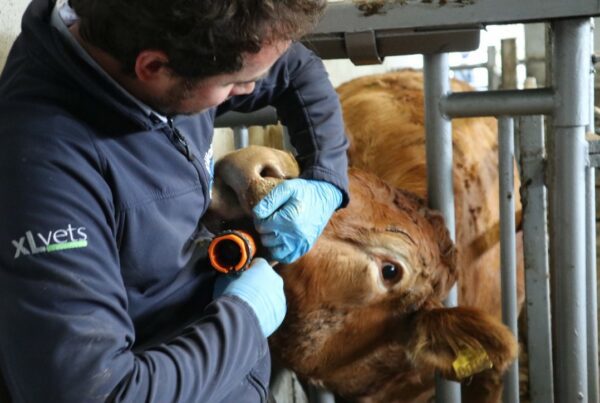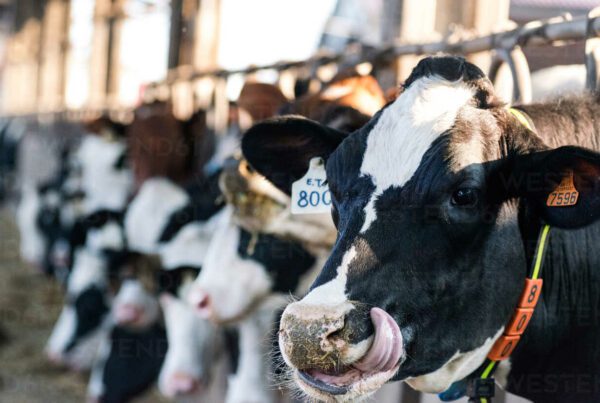Article by Rachel Brown MVB Cert CHP
Moy veterinary Clinic, Ballina, Co. Mayo
A cow acting off form with reduced milk yield, a young bull with a severe back injury, a heifer straining to urinate, a calf not sucking and drooling. These are some of the callouts that turned out to be photosensitisation.
What is Photosensitisation?
Photosensitisation (sun allergy or brown nose) occurs when sunlight reacts with a chemical or photodynamic agent in the blood, usually on the white, pale or hairless parts of the cow’s body. This causes an inflammatory response which damages the skin cells and causes redness and swelling. This can lead to the skin cells dying and the affected areas of the skin sloughing off.
What Causes It?
We have two main types of photosensitisation; primary and secondary.
Primary Photosensitisation: involves the ingestion of photodynamic agents in plants including St John’s wort and giant hogweed. There is also a rare genetic condition in Limousins/Blondes/Holsteins.
Secondary Photosensitisation: Liver damage from ragwort or fluke preventing the complete breakdown of plants and removal of photodynamic agents from the blood can lead to secondary photosensitisation. If the liver damage is bad the cow may not recover.
This is an intensely painful disease with severe painful sunburn type lesions, things to look out for include;
- Cattle are itchy, sore and are restless
- Ears, eyes and white or pale areas of the skin swell
- Muzzle initially has a greyish hue but then progresses to ulcerated, crusty, bloody mess
- Vulva and teats are reddened, leathery and painful
- Tail constantly swishing
- Cow may kick off the clusters or won’t let the calf suck
- Scrotum in bulls can be red and swollen
Treatment
Supportive care in a dark shed for 2-3 weeks. Your vet will administer anti inflammatories for pain and to limit the damage being done. We may give antibiotics to stop secondary skin infections.
Case Study
I had an urgent callout one sunny day to a young limousin bull with a severe back injury or colic. On arrival the bull was stumbling around the pen in distress. As I walked him around to get an overview, I noticed his ears were very swollen.
Closer examination revealed a high temperature, swollen red scrotum, greyish muzzle and any touch to his back made him try to lie down. I treated him with NSAIDs and he was housed in a ‘black’ dark shed. We provided a tub of water and feed in the pen beside him in case he was too painful to touch the drinker/feed barrier. He returned to full health, but his sperm production never recovered, and he was culled.
This is usually a sporadic condition but if the frequency is increasing you should get your vets advice on the best investigation approach.

